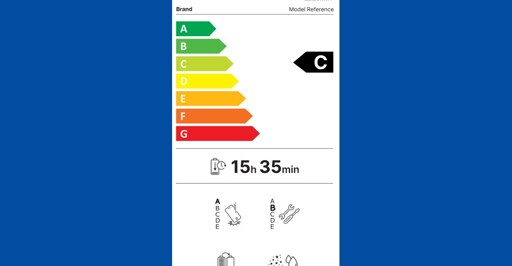- 8 Posts
- 16 Comments

 52·17 hours ago
52·17 hours agoYou can use Heroic Games Launcher to download and play Epic games.
I could, but those games contain and execute Epic code. (I checked this by examining the binaries, which is probably against Epic’s terms of service, but I don’t care if they find out and ban me.) This would still be true even if they were launched with Heroic or some other launcher. After the snooping that Epic code has already been caught doing, I don’t trust it to run on my systems.
plus I block them in my firewall so no calls home.
Wise decision.

 51·19 hours ago
51·19 hours agoThey’re also encumbered with Epic spyware, so despite having collected some of those free games early on, I won’t even run them (or the Epic store app) anymore.

 13·49 minutes ago
13·49 minutes agoFor the uninformed:
That was when Blitzchung, in his post-tournament win interview, uttered a brief sentence in support of Hong Kong (and implicitly in support of human rights). Blizzard responded by revoking his prize money, banning him from tournaments, and terminating the interviewers who happened to be on camera with him at the time.
This action took place late at night (well outside of US business hours) and was accompanied by a letter that some analysts pointed out had peculiar phrasing patterns that one might expect from native-Chinese speakers writing in English. The excuse given was a tournament rule prohibiting any act that “brings you into public disrepute, offends a portion or group of the public, or otherwise damages Blizzard image.”
To answer your question: No.
At the subsequent BlizzCon, Blizzard president Allen Brack gave a speech in which he “apologized” for the vague act of failing to live up to the high standards they set for themselves. He didn’t mention Blitzchung at all. This was a typical, predictable, corporate non-apology, allowing them to say “I’m sorry” for something other than the harm they inflicted or the position they took. Neither Brack nor Blizzard apologized for the actions taken against Blitzchung and the interview hosts. The punishments were not reversed. (I think Blizzard eventually responded to massive public pressure by somewhat reducing the duration of Blitzchung’s ban, but never lifted it entirely, awarded his prize money, or restored the interview hosts’ contracts.)
A few years later, Activision Blizzard was bought by Microsoft. Bobby Kotick, the CEO at the time of the Blitzchung decision, is no longer there. We don’t know who else participated, so we don’t know if they are are still making decisions at Blizzard.

 5·7 days ago
5·7 days agoThis site does detailed reviews, including measurements, photos, and comparisons:
https://www.rtings.com/monitor
https://www.rtings.com/review-pipeline/monitor
https://www.rtings.com/vote/monitorThis one is good for digging up details about specific models, such as what panel is used or where it was made, also with comparisons:
https://www.displayspecifications.com/
Simon over at TFTCentral used to do the best monitor reviews. Sadly, he quietly replaced his site with an OLED-focused blog a few years ago, perhaps because catering to gamers with disposable income makes more money. Nevertheless, he knows what he’s talking about when it comes to displays, his tech articles are still good (if you can find them on the new site), and he might still review IPS models once in a while:
For me, IPS beats OLED, because:
- OLED suffers from burn-in after enough years pass. Some vocal gamers on Reddit don’t seem to care about this, arguing that you’ll throw away the monitor before the burn-in becomes a problem. I think this is irresponsible (unnecessary environmental damage), and wasteful (I keep using my tools until they die).
- A good IPS panel will have only mild glow at off-angles. It’s visible around the corners if I’m playing very dark games in a very dark room and sitting close to the screen, but even then, it’s never bothersome, since I don’t spend much time staring at the corners of the screen.
- In addition to gaming, I spend lots of time reading text. IPS is generally great for this. OLED panels vary in this area, in some cases even using weird subpixel layouts (e.g. BGR) that defeat font rendering systems like ClearType, making the text anything but sharp. Eye strain sucks.
I haven’t been following display news in the past year or so, but when I was, LG.Display’s “IPS Black” panels were on their way to market with a promise of higher contrast ratios than traditional IPS. I think Dell or HP were going to use them. By now, more of their kind might exist.
When I was last shopping for a 27" gaming/productivity display, I narrowed it down to the Asus ROG Strix XG27AQMR, Dell G2724D, and Acer Predator XB273U V3bmiiprx. That was roughly a year ago. I don’t know if those models are still on the market, or if better ones are available now.

 7·9 days ago
7·9 days agoLet’s not forget an even bigger problem with Discord: It locks your communities, including contacts and years of content and discussions created by members, behind some corporation’s
terms and conditionswhims. You (or your friends, or the “server” admin) can lose access to it all at any time, without warning. They can and have used this as leverage to extort personal info from people. A policy change, accident, or technical glitch can leave you out in the cold.This alone is reason enough to avoid it.

 6·9 days ago
6·9 days agoMumble for voice chat. (It already beats Discord in that department.) A server can be self-hosted, or rented for dirt cheap.
Matrix is getting better all the time, and although it won’t replace all of Discord’s features today, it is catching up. I already use it for text chat, and wouldn’t be surprised if it could take over for video, screen share, etc. in the next year or so.
Tip for people wanting to try Matrix now: Consider disabling encryption on your Discord replacement rooms until Matrix 2.0 is fully released, to avoid occasional frustrating glitches. That won’t be a loss coming from Discord, which doesn’t have end-to-end encryption anyway.

 5·10 days ago
5·10 days agoAnyone know if the save game files are compatible with the original?

 19·16 days ago
19·16 days agoIIRC, the creator’s medical bills were the motivator for bringing it to Steam with graphics upgrades. I’m glad to see he’s finding success here.
I was referring to the image-only link and the embed that you suggested. Sorry if that wasn’t clear.
Neither of those is a good approach, because part of every xkcd comic is the hover text.

 7·22 days ago
7·22 days agoI often sit at a desk all day and all evening. I find that these things help:
- Good chair. Height adjusted for my keyboard/mouse height. Upright back. Lumbar support. Comfortable-but-supportive seat.
- Good posture (when I remember to pay attention to it).
- Split, tented keyboard. Mechanical switches that don’t require too much pressure.
- Good display. IPS panel. Light anti-glare surface. Backlight that actually dims the light source, either without pulse-width modulation, or with PWM at such high frequency that it cannot induce flicker fatigue. Brightness turned down much lower than the default. Calibrated at that brightness setting, optionally to a slightly warm color temperature.
- Muted room lighting. Nothing behind me bright enough to reflect much on the screen.
- Comfortable clothes.
- Cup of water. Regular trips to the kitchen to keep it filled.
- Frequent short breaks. Start the laundry. Get a snack. Look at objects outside. Wash a dish. Bring in the mail. Make the bed.
- Exercise. At least 10 minutes daily; preferably 30 minutes or more. Stretches. Squats. Rhythm games that require full-body movement.

 37·27 days ago
37·27 days agohttps://duckduckgo.com/?q=apt+3.0
Edit for those who couldn’t be bothered to click through the first result:
https://salsa.debian.org/apt-team/apt/-/blob/main/debian/changelog

 1·28 days ago
1·28 days agodeleted by creator
Thank you.
It’s worth noting that import failed the very first time I tried it, as a new user.
Maybe Lemmy’s rate limiter is coded to count exports the same as imports? That would explain the behavior I observed, because I did export my settings first, so I could edit them and then import, which failed. That logic would seem bizarre, though, both because I would expect an export to be cheap and not worth throttling, and because I would expect an export/edit/import cycle to be a somewhat commonly needed operation (even if not frequently used).









Probably the most famous example is when their store app was caught copying Steam files, collecting friends play history, and scanning running processes.
https://old.reddit.com/r/fuckepic/comments/wakewr/epic_games_spyware_vs_steam_vs_as_comparision_ea/
https://www.resetera.com/threads/developing-epic-games-launcher-appears-to-collect-your-steam-friends-play-history-up2-valve-responds-see-threadmarks.105385/
https://www.pcgamesn.com/epic-launcher-spyware
Separately, Epic Online Services (which is embedded into many games from the Epic store and some from other stores) collects more information than many people are comfortable with.
And then there’s the fact that Tencent owns a sizeable chunk of Epic.
Some folks don’t mind these things, but they’re not okay with me, so I don’t allow software from Epic to run on my systems.